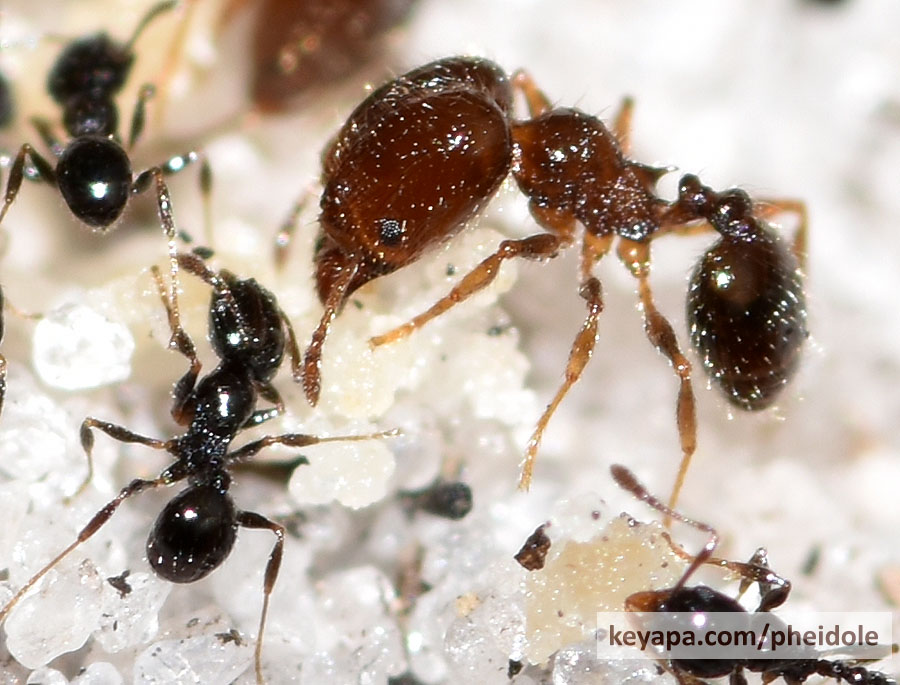
Most newcomers who like ants tend to gravitate towards those species that are flashy and larger in size. My own experience also involved ants that I could readily see, whether Oecophylla smaragdina, or Solenopsis geminata, or the solitary Odontomachus spp that I sometimes saw wandering around our porch (I once called them “Black Wanderers” when I was a kid).
Even Pheidole megacephala , although considerably smaller than something like the Atta leafcutters, have minors that are at around 2 mm in total length. But now that I have involved myself more with other Pheidole species, I find myself encountering species that are truly and wonderfully tiny.

The miniscule minor workers of Pheidole adrianoi look like tiny black dots as they slowly forage on the ground. They have HW of only 0.38 mm and a total length that barely goes over 1 mm. The majors of the species are much larger, but still cannot muster a HW of greater than 1 mm and a total length of around 2.5 mm.
I encountered the species yesterday while hiking along a sandy path in Florida scrub. I saw a short line of minors moving sand out of a nest hole that was surrounded by excavated sand. Baiting with pecan cookies attracted a few majors from inside the nest.
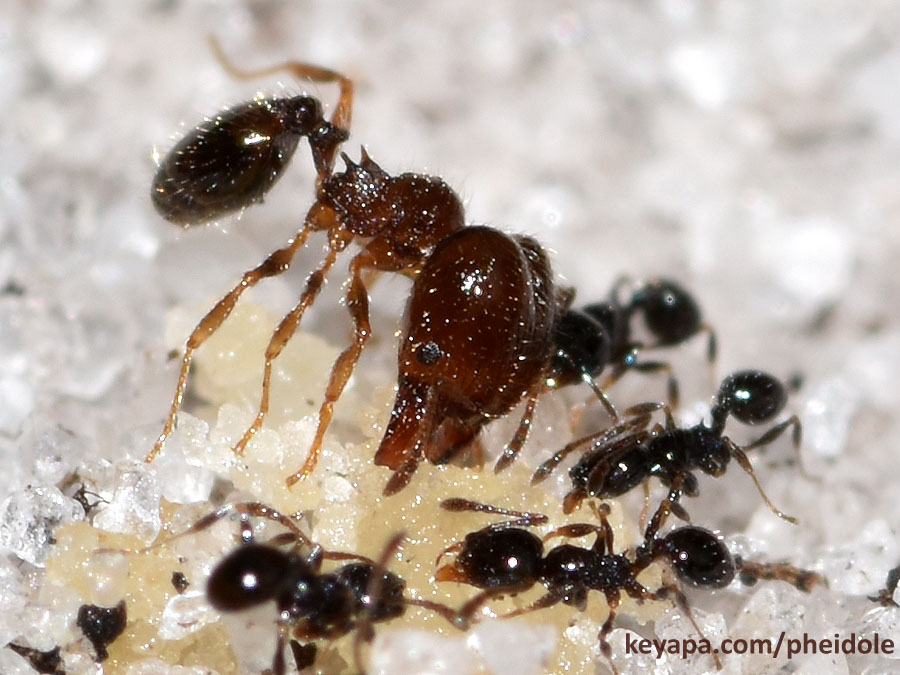
The tiny minors are a shiny black, with attractive two tone legs and light brown mandibles, while the majors are reddish brown in color. It is an attractive species when seen under magnification, and I was immediately enchanted by them.
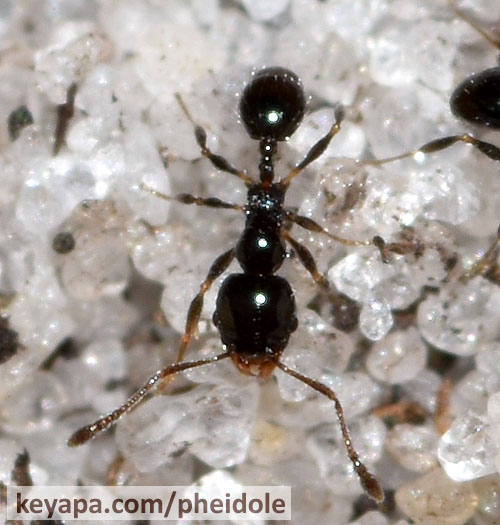
They seem to be good mass recruiters, although the number of ants that massed over the bait was never overwhelming. I saw at most three majors at any one time circling in the area and helping cut and carry the cookie bits.
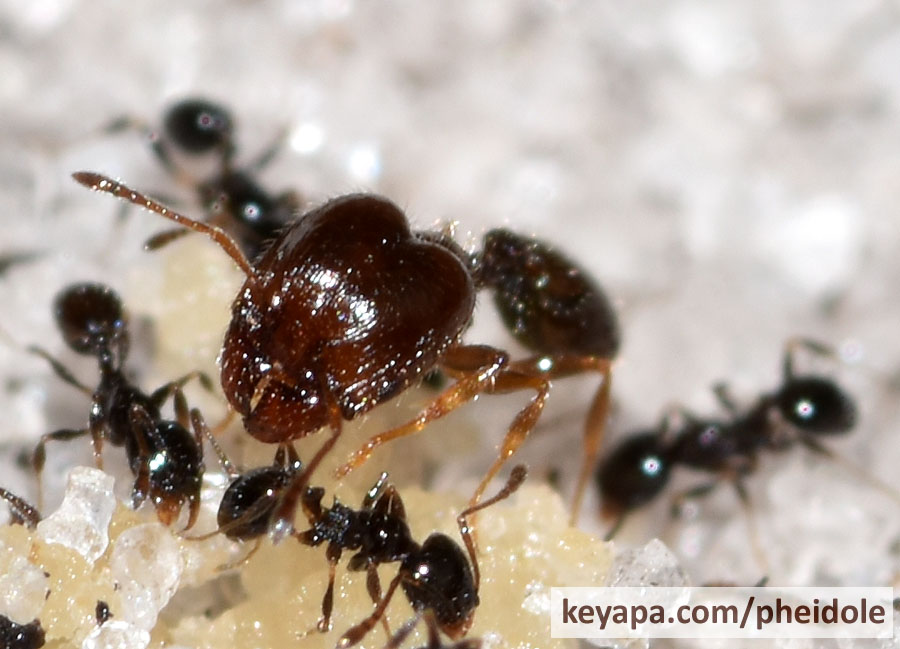
The colony seems to have multiple nest holes. In the case of the colony yesterday, I counted at least three nest. Two were very inconspicuous and were hidden under brown leaves, while another had a mound around it as lines of minors came out to dump grains of sand out.
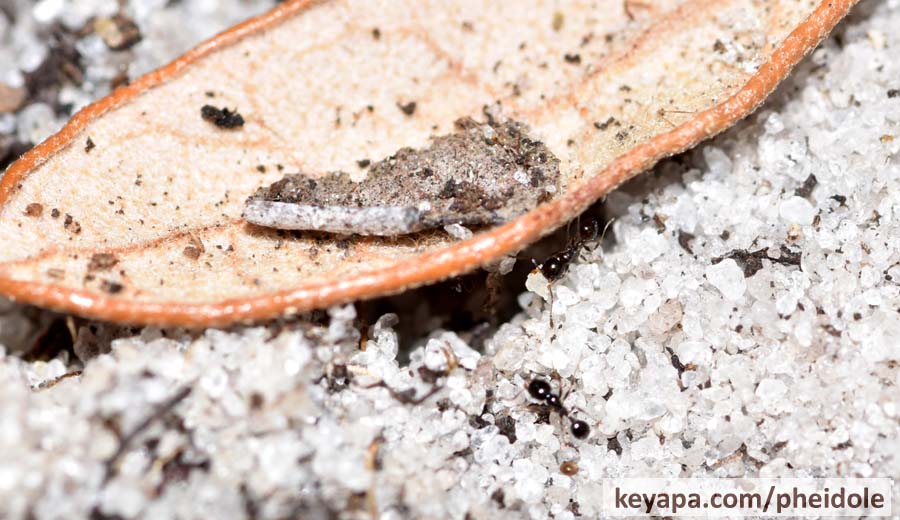
The major and minor are both not very confrontational. Unfortunately, there was a nearby Solenopsis invicta nest hole nearby, and after I had been gone for maybe 20 min and came back, the fire ants had completely taken over the bait. Given that the fire ants were significantly bigger than P. adrianoi, not to mention armed with stings and in colonies that probably swarf the latter, fleeing the scene was probably the best idea.
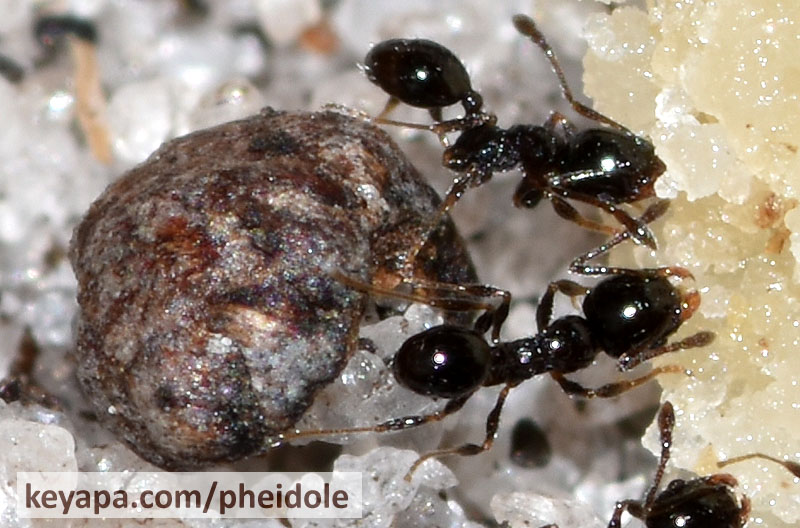
I have to admit I was completely excited in my first encounter with this minute Pheidole species. Seeing the minor workers at first was interesting, but when I caught sight of the large major and confirmed it was a Pheidole, my excitement level went through the roof. Now, this is what anting is all about!
I’ll be sure to visit this colony time and time again in future to see how it fares.

Leave a Reply